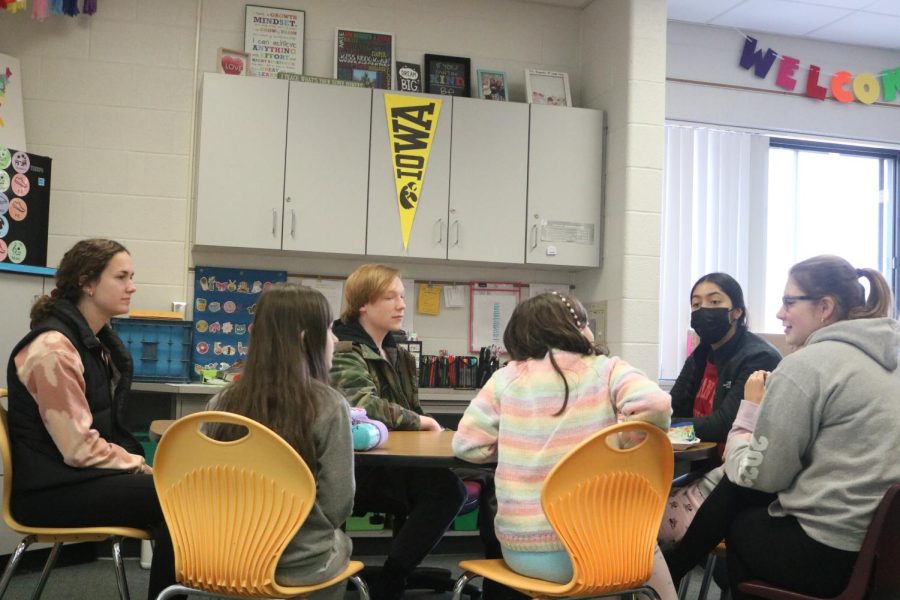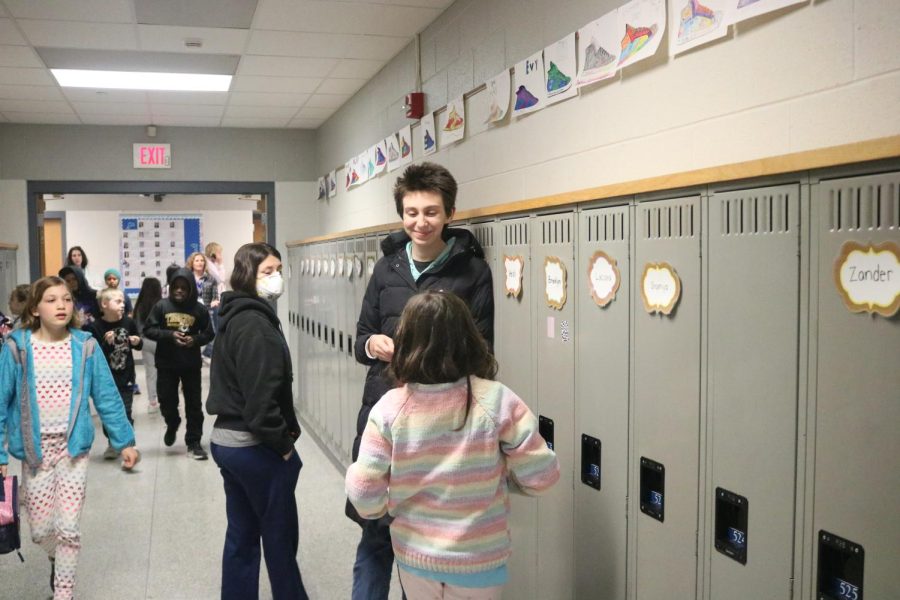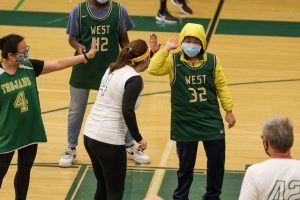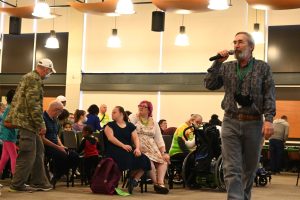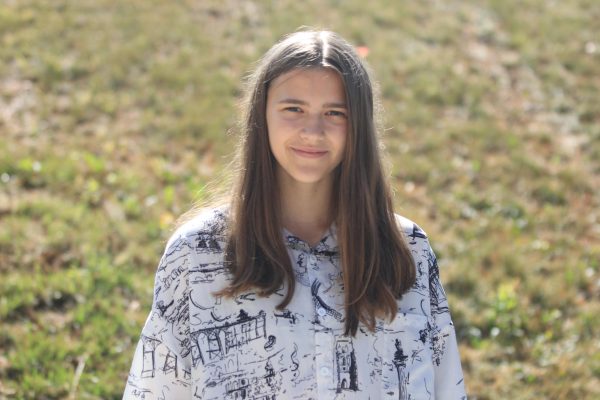A day in the life of a PAL
What a typical day in the classroom, or outside of it, would hold for a PAL in the peer to peer mentoring program is quite different than you may expect.
Mason Starbuck ’24, Aubrey Miller ’23, Emily Sierra Carbajal ’23 and Alexa King ’23 listen to the young girl talk.
March 6, 2023
A scenario where West High students walk around comfortably guiding and interacting with elementary kids half their age is surprisingly calming. These West High students are a reward to look forward to for the elementary students; to learn and socialize with in a safe learning environment. Following around the PALs, a term used for the enrolled students from the original acronym of Peer Assistance and Leadership Service, from the newly named Peer to Peer Elective Course Program, was a bit of sunshine in my day.
Peer to peer is a year-long course where high school students volunteer three to four school days a week at elementary schools. On a typical Tuesday and Wednesday, the PALs visit Borlaug Elementary to help students with specific projects and activities or to spend time with them. On Fridays, they are found in Weber Elementary’s fourth-grade classrooms, chatting with the kids who are eating their lunch.
Then on Thursdays and, currently, Mondays, PALs will stay at West High, where social studies teacher Anson Kritsch will have them do circle discussions, write summaries of their visits or do any other work.
On Feb. 24, I joined the PALs on their visit to Weber Elementary. Transportation there is usually student-oriented; however, Kritsch offers a ride to several students in the class. Students also figure out rides with each other, creating an amusing carpool situation.
These students don’t strike the picture of awkward family friends’ kids carpooling; Instead, they work together like a well-oiled machine. They banter with each other going into the school, knowing each other’s whereabouts and traversing the hallways with ease.
The PALs split between two classrooms, finding the kids they spend the most time with during their visits. Depending on the school, the PALs may be assigned to students; at other times, it’s free for all. But even as the number of PALs is smaller than in an average classroom, there is enough to share between the elementary kids.
As the PALs sit in the tiny chairs chatting with the kids, Kritsch switches between the classrooms to supervise the students. While there have been no accidents, Kritsch still looks after the students in case of mishaps.
The younger kids sit comfortably, chatting with the high schoolers, messing around with them and laughing at their dramatics. The PALs listen attentively and ask and answer questions from the PALs, asking about their day and what they are looking forward to in the future.
Time flies by until the bell rings, and the kids wrap up their lunchtime. The buddies usually walk them to their locker or the lunch room. And with their visit to Weber Elementary over, they drive back to West High and make it back before the fifth period starts. And if you are worried about lunch, they either eat A lunch before leaving or C lunch after returning.
Overall, the PALs are a welcoming group of students that currently help younger students with school or to have a part of their day a little brighter. This course offers valuable skills such as communication and mentorship. The most invaluable asset the PALs offer is the comfort and joy they bring to a classroom of future high school students.
“For students who take PALS, it’s a combination of those two things. They’re working on skills that are going to be sort of invaluable, unquantifiable, and they’re also getting more connected to West High,” Kritsch said.



